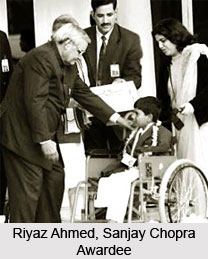Types of states in ancient India have been mentioned vaguely in Vedic Literature. It has been observed that monarchy was the type of state that was highly prevalent. Few passing references have been made to the Sangha or republican state. Initially the state was tribal in nature. The Rig Veda apart from the references to vispatis and janapatis frequently refers to specific tribes like the Yadus, the Purus, the Anus, the Turvasas. The notion of a territorial state was being gradually evolved in the later Vedic period. This has been clearly mentioned in the Atharva Veda. The Brahmana literature refers to the emperors as the rulers all over the earth bounded by the sea. Therefore the notion of the territorial state was established at this time (c. 1000) completely.
Monarchy was the normal form of the state in the Vedic period. In Aitareya Brahmana it is mentioned that different type of states flourished like rajya bhaujya, vairajya, and samrajya flourished in different provinces of the country. In the later history several kings have been mentioned enjoying different degrees of autonomy and ruling as feudatories of an emperor. In the Vedic period most of the states were small. Probably the dominion of a samrat was not much bigger than that of an ordinary king. Probably the term Rajya denoted a smaller but independent kingdom. Vairajya means a republic or a state which had no king.
States where the principal executive authority was vested in two rulers was prevalent in ancient India. Such a state existed in Sindh where the sovereignty was vested in two different kings hailing from different houses. This type of state has also been referred to in Arthashastra. However two kings cannot rule in harmony as each of them have unlimited power extending over the same kingdom. Such a state is often torn by factions and parties supporting the power of each ruler. In order to avoid discord, very often the brother or cousin rulers of a dvairajya state would divide the kingdom between them, as was done in the dvairajya kingdom. This was created in Vidarbha by the sungas. Though the kingdom was divided, the two rulers would hold joint consultations on all important matters. When the two kings ruled in harmony, the state was called a two-kings-state. When they were pulling in opposite directions, it was called a self-fighting state or virudharajya.
There are passages in the Vedas that refer to the existence of an oligarchy, where power was vested in a council of nobles. Each member was entitled to call himself a kin who had a right to elect the chief of the state. This type existed in the sixth century in some parts of North Eastern India. Side by side with monarchical and oligarchical states, there also existed republican governments in ancient India as early as the Vedic age. A passage in the Aitareya Brahmana states that the people who lived near the Himalayas like the Uttarakurus and the Uttaramadras had no king and therefore called virat or kingless. These people had a non-monarchical or republican form of government.
The city state was another feature of the political life earlier. Mahabharata refers to the powerful villages on the bank of the Indus River. Here it is referring to the powerful city states. It is probable that at some periods of their history there were city states who issued coins on their own authority. The city states did not bring the outlying villages under their control. The government was generally carried on by the aristocratic classes of the city.
Composite and confederate states were also known to ancient India. It is probable that the Kurupanchalas in the later Vedic period formed a composite state, ruled by a common king. Yaudheya state of republic comprised of three sub-states. These confederations lasted for short periods. During the time of Lord Buddha and Lord Mahavira, the Lichchhavis had formed a confederation, once with the Mallas and once with the Videhas. The Lichchhavi-Malla federal council consisted of 18 members, nine being elected by each of the confederating state. However it can be concluded that the jurisdiction of the central government of the confederating states was confined to foreign policy and the declaration and prosecution of war. Each state retained its sovereignty. The general for the joint army was elected by the confederating states.
States in ancient India were unitary in nature. King was the source from which the ministers and provincial governors derived their power. Village Panchayats, town-councils and trade-guilds also were controlled by the central government. However the state`s intervention in these bodies was limited except in the case of a breach of constitutions. The unitary character of the state was modified to a great extent by the presence of these autonomous bodies, which used to function on their own lines despite revolutions occurring at the centre






